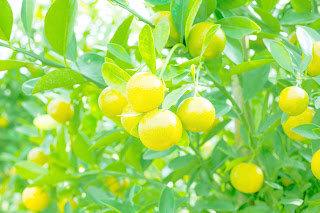Dear, Children,
A most heart welcome ! We are happy to place this post. In this post begins with the most fundamental introductions, and the features are then introduced steadily. The language used is simple and to the point. One is the beginning and foundation of education, The skills of observation, thinking and analysis are important for learning this post well. Keep using and refining them. The students are never to be put under pressure to perform as per laid - down norms. The journey from class to class should be an enjoyable one. Students should be eager to progress from one level to the next. They should be presented with a variety of exercises and diverse activities. These will motivate them to move forward and develop within them the desire to excel. They will thus come up to the standards required in a natural, comfortable manner.
Learning Outcome : To improve observation skills.
Willard Libby
It is possible to decide the age of ancient objects up to 60,000 years old with the help of the Carbon - 14 method. This method was invented by the scientist, Willard Libby.Dating methods : Carbon - 14 is a radioactive element that is found in the bodies of all living organisms. After the death of an organism, the Carbon - 14 in the body begins to decrease. When pieces of wood, charcoal, bones, fossils, etc. from the prehistoric period are found, it is possible to measure the remaining C -14 in a laboratory. By measuring the remaining C-14 in the object, we learn how old that object is. This scientific method of determining the approximate age of an object is Known as the C -14 dating method. There are few other dating methods, but the C-14 dating method is the one most frequently used. Once the age of an ancient object is determined with the help of this and other dating methods, it is possible to determine the period of the culture to which these objects belonged. Then it can be places on the unilinear timeline.
As the tree grows in height, the trunk also grows in girth. A new ring appears for every year of the growth of the girth. The rings can be seen when the tree is cut. If we count the rings, we come to know the age of the tree. This can also be used to determine the age of a wooden artefact. This method is knows as the Tree - ring method.
In October 1945 Libby became professor of chemistry in the Department of Chemistry and Institute for Nuclear Studies (now the Enrico Fermi Institute for Nuclear Studies) at the University of Chicago (1945 - 1959). At age thirty - six he became the youngest full professor the 1960 Nobel Prize in Chemistry "for his method to use carbon -14 for age determination in archeology, geology, geophysics,.
Willard Libby he was an American Physical chemist noted for his role in the 1949 development of radiocarbon dating, a process which revolutionized archaeology and paleontology. For his contributions to the team that developed this process, Libby was awarded the Nobel Prize in Chemistry in 1960. A 1931 Chemistry graduate of the University of California, Berkeley, from which he received his doctorate in 1933, he studied radioactive elements and developed sensitive Geiger counters to measure weak natural and artificial radioactivity. During World War II he worked in the Manhattan Project's Substitute Alloy Materials (SAM) Laboratories at Columbia University, developing the gaseous diffusion process for uranium enrichment.
Libby is a Physical Chemist, and specialist in radiochemistry, particularly hot atom chemistry, tracer techniques, and isotope tracer work. He became well-known at University of Chicago for his work on natural carbon-14 (radiocarbon) and its use in dating archaeological artifacts, and natural tritium, and its use in hydrology and geophysics. Besides the Nobel Prize in Chemistry for 1960, he received other distinctions, including the Research Corporation Award for 1951 for the radiocarbon dating technique; the Chandler Medal of Columbia University for outstanding achievement in the field of chemistry (1954) the American Chemical Society Award for Nuclear Applications in Chemistry (1956); the Elliott Cresson Medal of the Franklin Institute (1957); the American Chemical Society's Willard Gibbs Medal Award (1958); the Albert Einstein Medal Award (1959); the Day Medal of the Geological Society of America (1961).
Libby soon became deeply involved in the problem of nuclear fallout. In 1953, on the recommendation of the Rand Corporation of Santa Monica, California, he established and directed Project Sunshine to study the worldwide effect of nuclear weapons. He was the first person to measure nuclear fallout in dust, soil , rain, human bone, and other sources, and he wrote articles and testified before the U.S. Congress on this problem. He stated that all human beings are exposed to some fallout of natural radiation that all human beings are expend to some fallout of natural radiation from sources such as drinking water and claimed that the combination of the body's natural radioactivity, cosmic radiation, and natural radiation of the earth's surface was more hazardous than the fallout resulting from nuclear testing. Along with most scientists at the time, he believed that the effect of nuclear fallout on human genetics was minimal. It alter became know that testing of nuclear weapons resulted in a large global increase in the carbon - 14 levels in the atmosphere, which decreased exponentially after the cessation of atmospheric testing in 1963.
Libby accepted professorship at the University of Chicago's Institute for Nuclear Studies, where he developed the technique for dating organic compounds using carbon - 14. He also discovered that tritium similarly could be used for dating water, and therefore wine. In 1950, he became a member of the General Advisory Committee (GAC) of the Atomic Energy Commission (AEC). He was appointed a commissioner in 1954, becoming its sole scientist. He sided with Edward Teller on pursuing a crash program to develop the hydrogen bomb, participated in the Atoms for Peace program, and defended the administration's atmospheric nuclear testing. Libby resigned from the AEC in 1959 to become Professor of Chemistry at University of California, Los Angeles (UCLA), a position he held until his retirement in 1976. In 1962, he become the Director of the University of California statewide Institute of Geophysics and Planetary Physics (IGPP).
He attended grammar and high school near Sebastopol, California, between 1913 and 1926, moving to the University of California at Berkeley in 1927, where he studied till 1933, taking his B.Sc. and PH.D. degrees in 1931 and 1933 respectively. He was appointed Instructor in the Department of Chemistry at California University (Berkeley) in 1933 and during the next ten years was promoted successively to Assistant and then Associate Professor of Chemistry. He was awarded a Guggenheim Memorial Foundation Fellowship in 1941 and elected to work at Princeton University, but on 8th December, 1941, this Fellowship was interrupted for war work on America's entry into World War II, and Libby went to Columbia University on the Manhattan District Project, on leave from the Department of Chemistry, California University, till 1945. At the end of the war, in 1945, Libby accepted the post of Professor of Chemistry in the Department of Chemistry and Institute for Nuclear Studies (now the Enrico Fermi Institute for Nuclear Studies) of University of Chicago, remaining there till his appointment by President Eisenhower on 1st October, 1954, as a member of the U.S. Atomic Energy Commission.
This appointment was renewed by the President for a further five-year term on 19th June, 1956, but Libby resigned from it on 39th June, 1959, to become Professor of Chemistry in the University of California at Los Angeles, being appointed Director of the Institute of Geophysics and Planetary Physics on 1st January, 1962. On March 4, 1947, Libby and his students obtained the first age determinations suing the carbon-14 dating technique. He also dated linen wrappings from the Dead sea Scrolls, bread from Pompeii buried in the eruption of Vesuvius (AD 79), charcoal from a Stonehenge campsite, and corncobs from a New Mexico cave, and he showed that the last North American ice age ended about 10,000 years ago, not 25,000 years ago as previously believed by geologists.
Dendrochronology : Dendrochronology (or tree-ring dating) is the scientific method of dating tree rings (also called growth rings) to the exact year they were formed. As well as dating them, this can give data for dendroclimatology, the study of climate and atmospheric conditions during different periods in history from wood. Dendrochronology derives from Ancient Greek dendron, meaning "tree", Krono's, meaning "time", and - logia "the study of". Dendrochronology is useful for determining the precise age of samples, especially those that are too recent for radiocarbon dating, which always produces a range rather than an exact date. However, for a precise date of the death of the tree a full sample to the edge is needed, Which most trimmed timber will not provide. It also gives date on the timing of events and rates of changes in the environment (most prominently climate) and also in wood found in archaeology or works of art architecture, and also in wood found in archaeology or works of art and architecture, such as old panel paintings. It is also used as a check in radiocarbon dating to calibrate radiocarbon ages.
New growth in trees occurs in a layer of cells near the bark. A tree's growth rate changes in a predictable pattern throughout the year in response to seasonal climate changes, resulting in visible growth rings. Each ring , marks a complete cycle of seasons, or one year, in the tree's life. Dendrochronology has become important to art historians in the dating of panel paintings. In addition to dating, dendrochronology can also provide information as to the source of the panel. Many Early Netherlandish paintings have turned out to be painted on panels of "Baltic oak" shipped from the Vistula region via ports of the Hanseatic League. Since panels of seasoned wood were used, an uncertain number of years has to be allowed for seasoning when estimating dates. Panels were trimmed of the outer rings, and often each panel only uses a small part of the radius of the trunk. Consequently, dating studies usually result in a "terminus post qualm" (earliest possible) date, and a tentative date for the arrival of a seasoned raw panel using assumptions as to these factors.
Queen of Scots in the National Portrait Gallery, London was believed to be an eighteenth - century copy. However, dendrochronology revealed that the wood dated from the second half of the sixteenth century. It is now regarded as an original sixteenth - century painting by an unknown artist. The sixteenth century saw a gradual replacement of wooden panels by canvas as the support for paintings, which means the technique is less often applicable to later paintings. In addition, many panel paintings were transferred onto canvas or other support during the nineteenth and twentieth centuries.
We hope that the Article will receive a warm welcome from students, readers, and parents. Enjoy reading.

![Agriculture [2022]](https://blogger.googleusercontent.com/img/a/AVvXsEiUbWWJO2L-LJ74lxGtcec9ZbpX8gob-C0jBXtl9xtq7a9g9m6GalD_3lxG_Avjz_D3AafRBb7wA_LgpP_DqVgUJg3R-zXj-ev3PQQ2I5gLiqGtZWNX3UviL0v3fBamYQiRI0dlaUtfpaLTcH3pc14kxrs24FmCU0rXu-LRoIs6gJ3HLlENv1rrTNQG=w400-h265)
















![The King who Wanted to Touch the Moon [Story] - [ 2021 ] The King who Wanted to Touch the Moon [Story] - [ 2021 ]](https://blogger.googleusercontent.com/img/b/R29vZ2xl/AVvXsEjlZFW1tvMDfrCjWSPgPMNrbwKu9wRy-R1NjBb_p12HQ4RoG2XggRhpX_62taUDDeGSawS8xDNgojzwo_dtPjXdAefDaUOW29iOlcTITyNCyFmAaFsJ3WMkXR58yzCTncuBZfFomaZWAzY/s72-c/52.png)








